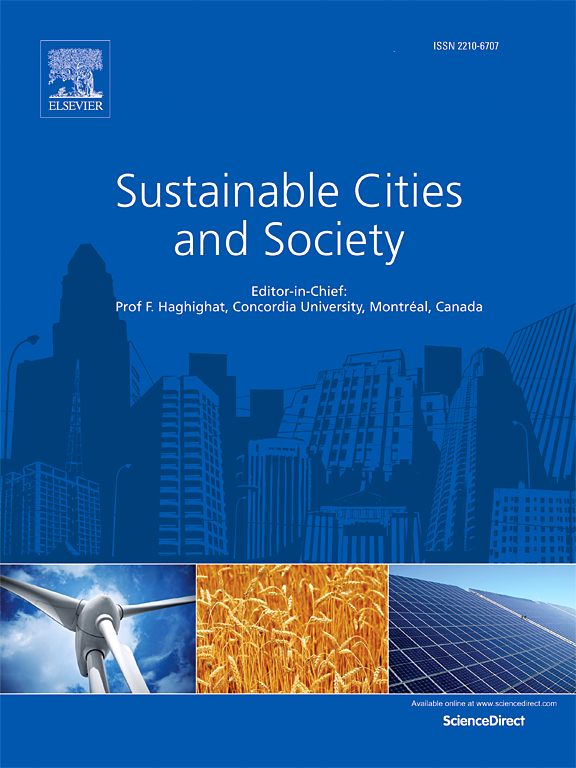Research on optimal design of multi-energy microgrid considering hybrid resilience load management and Carbon emissions
IF 10.5
1区 工程技术
Q1 CONSTRUCTION & BUILDING TECHNOLOGY
引用次数: 0
Abstract
This paper presents an optimal sizing model for the multi-energy microgrid (MEMG) based on mixed-integer linear programming (MILP), intended to minimize the annual total cost (ATC). The MEMG incorporates multi-energy storage systems (MESS) and power-to-gas (P2G) systems considering power-to-hydrogen (P2H) and hydrogen-to-gas (H2G) processes independently. To this end, a novel two-way hybrid resilience load management strategy is introduced and the uncertain behavior of EVs and HVs is modeled via Monte-Carlo Simulations (MCS). In addition, the vehicle-to-grid (V2G) capabilities are enabled for MEMG stability. The proposed design achieves a 4.19% annual total cost reduction rate (ATCRR) and 8.81% annual emission reduction rate (AERR) compared to the design without MESS, revenue, and H2G capabilities. Co-integration of H2G and V2G technologies yields a 7.281% AERR and 0.37% ATCRR. The CCS alone captures 20.35% of the annually making the system low-carbon. Furthermore, five storage systems improve efficiency and reduce ATC by 1.5%. Besides, the revenue generated from sales and cross-market arbitrage covers 35.56% of MEMG expenses. Notably, the resilience management strategy effectively mitigates incremental cost burden of 1.3% and reduces emissions, ensuring robustness against outages. Therefore, the proposed system provides a clean, resilient, and cost-effective solution to the modern energy sector.

求助全文
约1分钟内获得全文
求助全文
来源期刊

Sustainable Cities and Society
Social Sciences-Geography, Planning and Development
CiteScore
22.00
自引率
13.70%
发文量
810
审稿时长
27 days
期刊介绍:
Sustainable Cities and Society (SCS) is an international journal that focuses on fundamental and applied research to promote environmentally sustainable and socially resilient cities. The journal welcomes cross-cutting, multi-disciplinary research in various areas, including:
1. Smart cities and resilient environments;
2. Alternative/clean energy sources, energy distribution, distributed energy generation, and energy demand reduction/management;
3. Monitoring and improving air quality in built environment and cities (e.g., healthy built environment and air quality management);
4. Energy efficient, low/zero carbon, and green buildings/communities;
5. Climate change mitigation and adaptation in urban environments;
6. Green infrastructure and BMPs;
7. Environmental Footprint accounting and management;
8. Urban agriculture and forestry;
9. ICT, smart grid and intelligent infrastructure;
10. Urban design/planning, regulations, legislation, certification, economics, and policy;
11. Social aspects, impacts and resiliency of cities;
12. Behavior monitoring, analysis and change within urban communities;
13. Health monitoring and improvement;
14. Nexus issues related to sustainable cities and societies;
15. Smart city governance;
16. Decision Support Systems for trade-off and uncertainty analysis for improved management of cities and society;
17. Big data, machine learning, and artificial intelligence applications and case studies;
18. Critical infrastructure protection, including security, privacy, forensics, and reliability issues of cyber-physical systems.
19. Water footprint reduction and urban water distribution, harvesting, treatment, reuse and management;
20. Waste reduction and recycling;
21. Wastewater collection, treatment and recycling;
22. Smart, clean and healthy transportation systems and infrastructure;
 求助内容:
求助内容: 应助结果提醒方式:
应助结果提醒方式:


